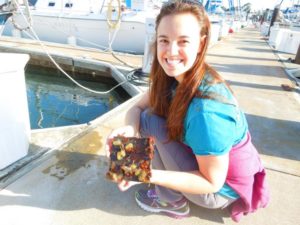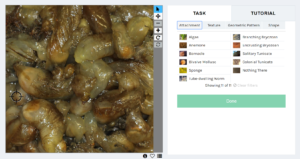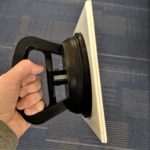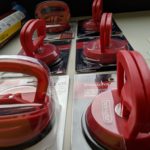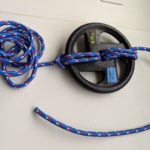By Stephanie Fox
Each year, thousands of invasive organisms cling to the bottoms of boats, traveling hundreds of miles to distant bays. It’s proven difficult and time consuming for scientists to investigate all the harbors being invaded. So researchers at the Smithsonian Environmental Research Center (SERC) are looking to citizen scientists for help.
Over the last year, volunteers assisted from the comfort of their homes, helping identify invasive species using images online. But this summer, a small group of Invader ID volunteers will get their hands dirty doing experiments of their own in the Chesapeake Bay.
The Fouling Settlement Project
For more than 20 years, SERC’s Marine Invasions Lab has run the Fouling Panel Settlement Project. Scientists deployed hand-sized panels in bays across the Americas, the Galápagos, Puerto Rico, Asia and more. Three months later, they returned to the tiles to see what creatures grew on them. Habitats underneath docks and ship hulls contain organisms like microbes, invertebrates, algae. While identifying native species is important, the scientists’ main goal is to identify outside species that latch onto boats and ships before falling into new harbors. Some stowaway species can’t survive in the new ecosystems. Others thrive, eventually becoming invasive.
But time spent traveling from harbor to harbor, and photographing and inspecting each individual panel, was stretching the scientists thin.
“We have an entire archive of unutilized resources in the photographs, but we don’t have the manpower to go back and look [at them all],” said SERC biologist Brianna Tracy. “I’m talking thousands and thousands of photographs.”
That’s why she and Katy Newcomer, two of the Marine Invasion Lab’s biological technicians, suggested uploading the panels onto Zooniverse. On Zooniverse, a popular volunteer-powered research platform, citizen scientists can hop online and help with several crowd-sourced, photo-based science experiments.
Crowdsourcing Science
Last March, SERC launched the Invader ID project on Zooniverse, asking the public to help identify creatures on 200 panels deployed in the San Francisco Bay. SERC uploaded 50 photographs per panel. This helps minimize the daunting identification task by only asking participants to identify one organism per image. Each individual photograph stays on the site until 10 different people identify the panel’s species. If 60% of people agree on the species, it is officially identified and removed. If there is a split disagreement among citizen scientists, the picture returns to SERC scientists to identify.
To help citizen scientists identify the species, Invader ID provides 10 categories to click through, such as texture, pattern and shape.
“If you’re coming in and you don’t know anything about any of these species, you can say, ‘Oh. Well. The texture of this thing is soft and shiny. It is growing attached the plate,’” explained Newcomer. “If you don’t know anything and you’re like, ‘This thing looks like a tree, but I don’t know what that means,’ you can go through and it narrows down all your options. Then, within each option there’s pictures that [ask] you, ‘Is this what it looks like?’”
Since each of the 10,000 photos must be identified 10 times, the Invader ID team is trying to get 100,000 identifications total. Citizen scientists have already completed about 80,000. Alison Cawood, SERC’s citizen science coordinator, attributes the success of the program to accessibility.
“You can do 15 or 20 images in 5 or 10 minutes, and that’s a really helpful thing,” she said. “And anybody, anywhere, can do that.”
Learn more: Invader ID Citizen Scientists Help Spot Invasive Species With Their Smart Phones
Invader ID Volunteers Take To The Docks
Making pictures of the San Francisco Bay panels available on Zooniverse was just the first in a long line of citizen science projects SERC hopes to roll out in the coming years.
“Just within the United States, we have probably 50 different bays of things photographed,” said Tracy. Success in the first year’s launch means the team can add more pictures soon, increasing the reach of Invader ID from San Francisco to bays around the globe.
They’re taking the citizen science aspect one step further this summer. For the past year, the citizen science office has worked to develop a relatively cheap and easy plan for members of the public to deploy panels of their own. This year, volunteer citizen scientists will set out panels similar to those used in the Fouling Panel Settlement Project into the Chesapeake Bay. If this trial is successful, it could mean a massive expansion of Invader ID.
“The idea would be that volunteers would put [their own panels] out and their pictures would wind up on Invader ID,” said Cawood.
Before starting, volunteers must acquire their materials:
- A ceramic title attached to a dent remover (Credit: Stephanie Fox/Northwestern University)
- Dent removers (Credit: Stephanie Fox/Northwestern University)
- Rope with weight (Credit: Stephanie Fox/Northwestern University)
- A ceramic tile (often either sold for less than a dollar or given away free as a sample at home improvement stores)
- Rope (a few yards cost under $5)
- A dent remover (this looks like a big suction cup with handles, and can be purchased for about $7)
- A weight (purchasable at fitness stores for as little as $5)
“Twenty dollars per set up is what we were going for,” Cawood said, though she noted that prices vary depending on the place. “It’s going to depend on where people are, but we were able to do that.”
The instructions advise citizen scientists to stick a car dent remover to a ceramic tile, and then tie a weighted rope to the dent remover. The entire contraption gets tied to a local harbor with the rope and dropped into the Chesapeake Bay. Three months later, the volunteers will return to the harbor to retrieve their tiles. If they followed the instructions correctly, the tiles should still be connected to the dent remover and (hopefully) covered with underwater creatures, ready to be photographed and uploaded to Invader ID.
“If the volunteers aren’t tying the knots correctly or something like that and we are losing [tiles], we will definitely have to reevaluate that before we would want to launch this at a larger scale,” Cawood said.
While it’s never good to drop anything harmful in the ocean, the Invader ID team at SERC made sure to choose material that cannot do a significant amount of damage if volunteers do lose any of their tiles this year.
“When a tile falls, it’s fine. Those are made of natural materials. They generally will provide habitats. They’re non-pollutants,” said Newcomer. The primary concern is losing the dent remover in the water. To combat this, SERC plans to provide a variety of training materials to ensure proper deployment. “When we deploy this out to citizen scientists, we will do a bunch of training videos on how to properly tie knots and ropes. And how to make sure that your setup is not going to fall in,” Newcomer added.
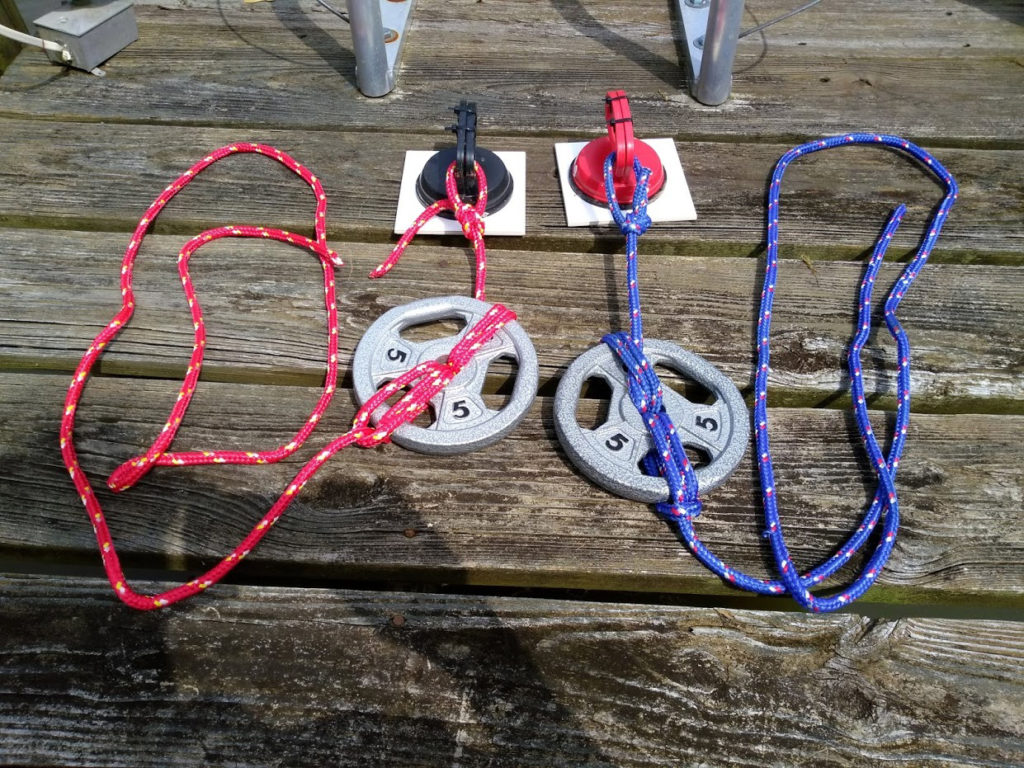
Volunteer Sheren Riker assembled these two settlement panels—complete with tiles, dent removers, weights and ropes—on her dock at Church Creek. (Credit: Sheren Riker)
If all goes well, Cawood hopes to do a global launch of the project by 2020. At that point, volunteers will be able register their deployment site with SERC, receive instructions, deploy their tiles for three months and send their photos to SERC for uploading onto Invader ID.
Recognizing the important learning opportunities of this project, Cawood is optimistic about the future of Invader ID.
“Most people don’t even know that what’s… under the docks is a living thing,” she said. “Having them be more connected to that and realizing that those are animals and that they get moved around by people, I think it’s a really good thing.”
Want to get involved? Contact Alison Cawood at cawooda@si.edu. You can also help identify Invader ID photos online at https://www.zooniverse.org/projects/serc/invader-id.

